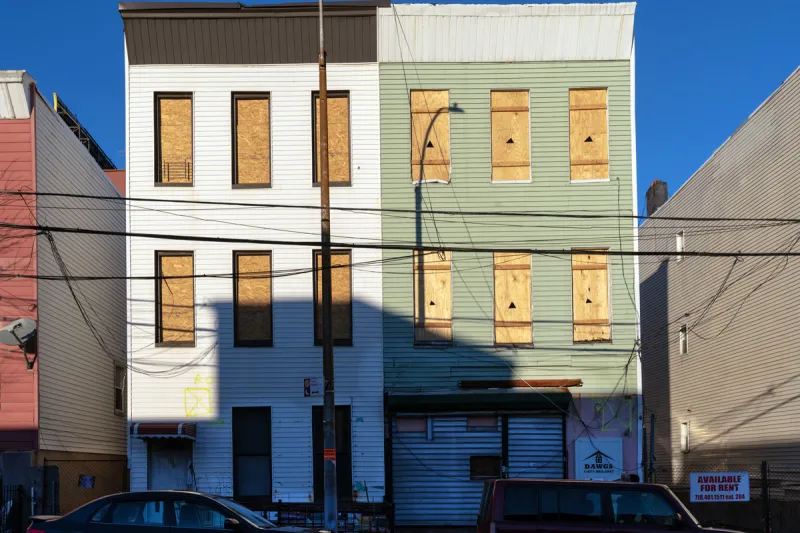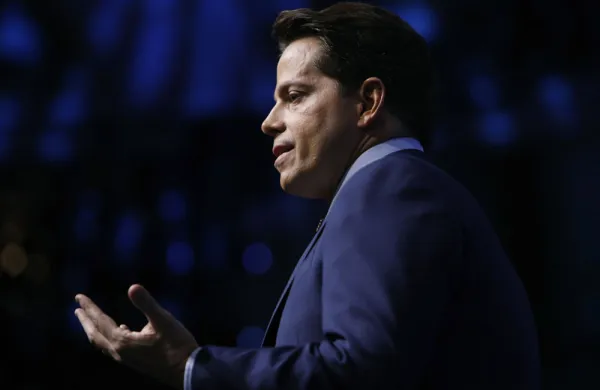
The Port Morris neighborhood in the Bronx has several designated opportunity zone tracts.
(David Delgado/Bloomberg)
While many managers and investors were focused on whether the Tax Cuts & Jobs Act would close the so-called carried interest loophole when it passed in the fall of 2017, few seemed to notice back then that the law also created a new measure — one that has since become the financial buzzword du jour.
Investment firms are scrambling to take advantage of that program, which offers tax incentives to encourage investment in what the law calls opportunity zones, or low-income areas. But whether these investments offer more than tax incentives to allocators is up for debate.
David Schawel — chief investment officer of Family Management Corp., a registered investment adviser and broker-dealer serving wealthy individuals — offered his opinion on the structure on Twitter on Monday.
“Ok, I’m throwing in the towel. I tried to give them a chance, but I haven’t seen one legitimate sounding opportunity zone investment,” Schawel tweeted. “The sales pitches remind me of blockchain except replace ‘decentralized’ with ‘tax deferral.’”
He declined to comment further, but his point had been made: A bevy of financiers quickly responded to the tweet with concerns ranging from long lock-up periods to high fees. And according to some investment firms, allocators so far have been slow to funnel capital into the strategy.
“I think in general the problem is that most of these funds are being started by entrepreneurial people trying to capitalize off of this new law instead of existing real estate investors who might have done the deals anyway,” said one chief investment officer who asked to remain anonymous.
Even Brett Messing — president of Skybridge Capital, which offers an opportunity zone real estate investment trust to investors — couldn't resist poking fun at the hype around these funds.
“Opportunity zones are like high school sex,” said Messing in a phone interview. “Everyone is talking about it, but nobody is doing it.”
But fund boosters say the structure offers several benefits. According to Messing, it made sense for Skybridge to offer an opportunity zone fund because the firm focuses on reducing volatility for investors.
“From an investor standpoint, the government is essentially subsidizing an investor to de-risk their portfolio,” Messing said. “The government is providing, for a limited amount of time, the opportunity to diversify their portfolios.”
Here’s how the program works: the U.S. government has outlined certain “opportunity zones,” or low-income areas in need of real estate investment. In exchange for investing capital in real estate and infrastructure projects in those areas, firms can receive several tax breaks.
For one, investors can temporarily defer their taxes on previously earned capital gains that are reinvested in an opportunity zone fund within 180 days. They can defer taxes on these gains until the end of 2026 or until the investment is sold, whichever comes first, according to Scott Eastman, a federal research manager at the Tax Foundation, a nonprofit, by phone.
If an investor holds the gains in an opportunity zone fund for five years, they can exclude 10 percent of those gains from taxation. If they hold them for another two years (for a total of seven), they can exclude another five percent from taxation — meaning that taxpayers can exclude up to 15 percent of the value of reinvested capital gains from their taxable income, Eastman said.
Finally, any gains achieved after the investment is made in an opportunity zone fund are tax-free, if the investment is held for at least ten years.
Said Steve Glickman, who helped to create the framework for the program and now runs Develop, a consultancy dedicated to opportunity zones, “It's the only part of the tax code where you get to fully write off your capital gains taxes.”
“Investors in real estate opportunity zone funds projects should expect mid-teen returns and 6 to 10 percent cash-on-cash distributions after stabilization,” said Quinn Palomino, principal at Virtua Partners, via email. She added that returns would be lower for social impact funds and higher for single-asset funds.
Another benefit? Diversification, according to Taylor Lembi, CEO of real estate investment firm M31 Capital, which launched its opportunity zone fund in April.
“Strong real estate performance in recent years and the demand for yield-producing assets is what’s driving so much interest in opportunity zone funds,” Lembi said via email. “Many investors are overweight in a stock market that is long in the tooth. Opportunity zone funds allow investors to defer taxes on market-related gains and diversify.”
It’s important to note that while most of an opportunity zone fund’s offerings look similar to other private equity investments, internal rates of return will not be as attractive as other investments.
“The IRR is going to get hurt,” said Brandon Lacoff, the chief investment officer at Belpointe REIT, a publicly traded opportunity zone real estate investment trust. Because of the longer lock-ups, the IRR will appear lower, because the measure increases when the same amount of money is made in a shorter period of time, Lacoff said.
It also isn't clear if the opportunity zone projects will benefit the communities they’re intended to, according to Eastman, who added that such programs aren't new.
“They’re part of a broader set of programs called place-based incentive programs,” he said.
Take, for instance, the EB-5 Visa program, which was used in the development of New York City's Hudson Yards project. The program allows foreign investors to receive green cards in exchange for investments in the United States. Investing in an area considered rural or “distressed” decreases the size of the investment necessary to qualify for the program from $1 million to $500,000.
[II Deep Dive: How OMERS Is Benefiting From a Hudson Yards Controversy]
“The effects have been mixed,” Eastman said of other opportunity zone projects. “It could be ineffective at spurring growth for these areas. At worst, they could be counterproductive for the economically distressed.”
For one thing, according to Eastman, there can be a skills mismatch between the types of businesses investors bring to an area and the skills of the workers there. And an influx of additional capital and labor in a given area can increase prices, which could force out longtime residents, he said.
“I think that this program should be good for investors in the sense that this lowers their capital gains taxes,” Eastman said. “Whether or not it’s going to be good for those people in those communities is still an open question, which is something I want to make sure of in the next decade.”
SkyBridge's Messing said he understands why allocators have been slow to invest capital in these programs.
“This is a longer-term investment that takes more consideration before pulling the trigger,” he said.
According to Glickman, waiting may not be the right move for investors.
“The assets are as cheap as they’re ever going to be,” he said.





